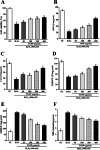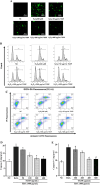Torreya grandis Seed Polyphenols Protect RAW264.7 Macrophages by Inhibiting Oxidative Stress and Inflammation
- PMID: 40735402
- PMCID: PMC12305672
- DOI: 10.1002/fsn3.70682
Torreya grandis Seed Polyphenols Protect RAW264.7 Macrophages by Inhibiting Oxidative Stress and Inflammation
Abstract
The seeds of Torreya grandis are rich in polyphenols, yet their chemical characteristics and biological activities require systematic elucidation. In this study, T. grandis seed polyphenols (TGSP) were prepared using ultrasound-assisted extraction (70% ethanol, solid-to-liquid ratio of 1:40 g/mL, 210 W power, 55°C, 50 min) coupled with AB-8 macroporous resin purification. The resulting TGSP were characterized by ultraviolet-visible (UV-Vis) spectroscopy, Fourier-transform infrared (FT-IR) spectroscopy, and liquid chromatography-tandem mass spectrometry (LC-MS/MS). Subsequently, their biological activities were systematically evaluated through in vitro chemical assays and in a cellular model. Structural analysis indicated that TGSP are abundant in gallic acid and catechins. TGSP exhibited selective scavenging activities against different free radicals, with half-maximal inhibitory concentrations (IC50) for 2,2'-azino-bis(3-ethylbenzothiazoline-6-sulfonic acid) radical cation (ABTS·+), 1,1-diphenyl-2-picrylhydrazyl radical (DPPH·), and hydroxyl radical (·OH) being 0.194 ± 0.015, 0.301 ± 0.020, and 1.013 ± 0.018 mg/mL, respectively. For comparison, the IC50 values of vitamin C (VC) for ABTS·+ and DPPH· radicals were well below 0.1 mg/mL, and its IC50 for ·OH radicals was 0.108 ± 0.011 mg/mL. At the cellular level, TGSP effectively inhibited the production of nitric oxide (NO), tumor necrosis factor-alpha (TNF-α), and interleukin-6 (IL-6) in lipopolysaccharide (LPS)-induced RAW264.7 cells. Furthermore, TGSP significantly counteracted hydrogen peroxide (H2O2)-induced oxidative stress by reducing levels of reactive oxygen species (ROS) and malondialdehyde (MDA), restoring the activity of antioxidant enzymes such as superoxide dismutase (SOD), and suppressing caspase-3/9-mediated apoptosis. In conclusion, these findings demonstrate that T. grandis seed polyphenols exert significant cytoprotective effects through a multi-target mechanism, including direct free radical scavenging, inhibition of inflammation, and attenuation of oxidative stress-induced damage. This suggests their potential for development as functional food ingredients or natural pharmaceutical components.
Keywords: Torreya grandis seed; antioxidant activity; anti‐apoptosis; free radical scavenging; inflammation inhibition; polyphenols.
© 2025 The Author(s). Food Science & Nutrition published by Wiley Periodicals LLC.
Conflict of interest statement
The authors declare no conflicts of interest.
Figures








Similar articles
-
Antioxidant Effects of Moringa oleifera Against Abamectin-Induced Oxidative Stress in the Brain and Erythrocytes of Rats.Chem Biodivers. 2025 May;22(5):e202402709. doi: 10.1002/cbdv.202402709. Epub 2025 Jan 7. Chem Biodivers. 2025. PMID: 39724495
-
Unveiling the Potential Biological and Chemical Mechanism of Pergularia tomentosa Extracts by Liquid Chromatography-Electrospray Ionisation-High-Resolution Tandem Mass Spectrometry, In-Vitro and In-Vivo Pharmacological Studies.Chem Biodivers. 2025 Jun;22(6):e202403006. doi: 10.1002/cbdv.202403006. Epub 2025 Feb 6. Chem Biodivers. 2025. PMID: 39889240
-
Optimization of Subcritical Water Extraction Process for Total Phenolics From Guava and Investigation of Its Antioxidant Activity and Inhibitory Effect on HepG2 Cell Proliferation.J Food Sci. 2025 Jul;90(7):e70323. doi: 10.1111/1750-3841.70323. J Food Sci. 2025. PMID: 40709511
-
Management of urinary stones by experts in stone disease (ESD 2025).Arch Ital Urol Androl. 2025 Jun 30;97(2):14085. doi: 10.4081/aiua.2025.14085. Epub 2025 Jun 30. Arch Ital Urol Androl. 2025. PMID: 40583613 Review.
-
Systemic pharmacological treatments for chronic plaque psoriasis: a network meta-analysis.Cochrane Database Syst Rev. 2021 Apr 19;4(4):CD011535. doi: 10.1002/14651858.CD011535.pub4. Cochrane Database Syst Rev. 2021. Update in: Cochrane Database Syst Rev. 2022 May 23;5:CD011535. doi: 10.1002/14651858.CD011535.pub5. PMID: 33871055 Free PMC article. Updated.
References
LinkOut - more resources
Full Text Sources
Research Materials
Miscellaneous

